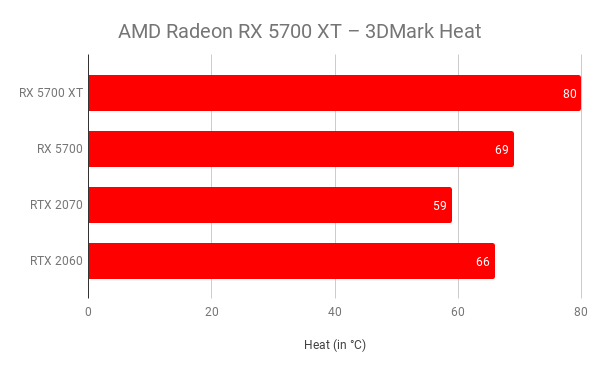AMD Radeon RX 5700 XT Review
AMD Radeon RX 5700 XT Review
Can AMD crash Nvidia's RTX party with its new graphics card?
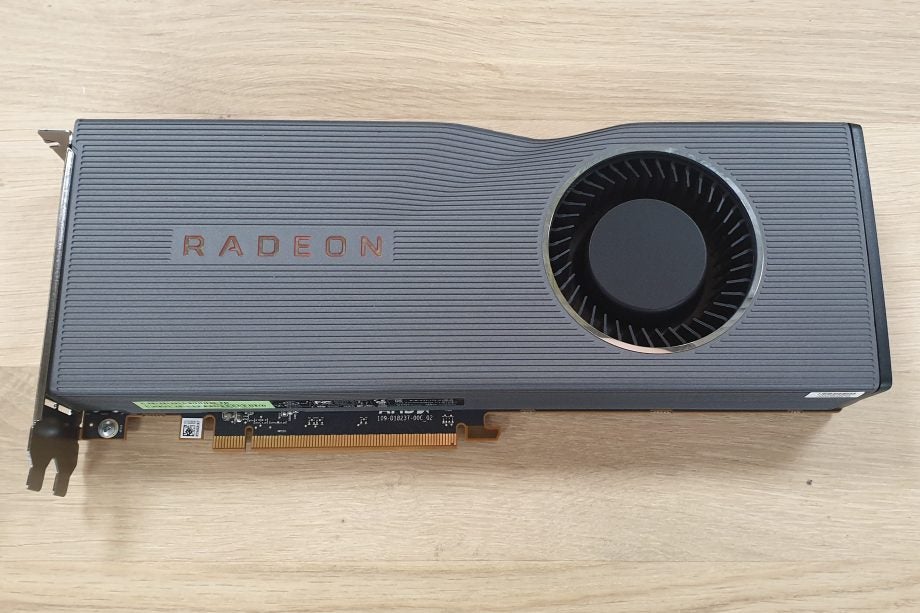
Verdict
One of the best value graphics cards for Quad HD gaming, just as long as you don't mind missing out on ray tracing
Pros
- Fantastic value for gaming in Quad HD
- Radeon features feel useful and polished
- Cool design
Cons
- No ray tracing
- Runs hotter than Nvidia equivalent cards
- Poor overclocking potential
Key Specifications
- Review Price: £380
- AMD Navi architecture
- 1605MHz base clock speeds
- 1905MHz boost clock speeds
- VRAM: 8GB GDDR6
- TDP: 225W
What is the AMD Radeon RX 5700 XT?
The AMD Radeon RX 5700 XT is one of the very first graphics cards to launch with AMD’s long awaited Navi architecture, which uses 7nm process technology. With the AMD Navi architecture touted to be the foundation of the custom-built GPUs for the PS5 and Xbox 2 next-gen consoles, this is an extremely exciting addition to AMD’s graphics card lineup.
AMD has positioned the RX 5700 XT graphics card as a competitor for Nvidia’s RTX 2070 graphics card, with similar specs and performance for Full HD and Quad HD gaming despite being £70 cheaper.
The one massive issue for AMD’s RTX alternative though, is that it lacks the technology required to enable ray tracing, which sees games treated to stunning and more realistic lighting and reflection effects.
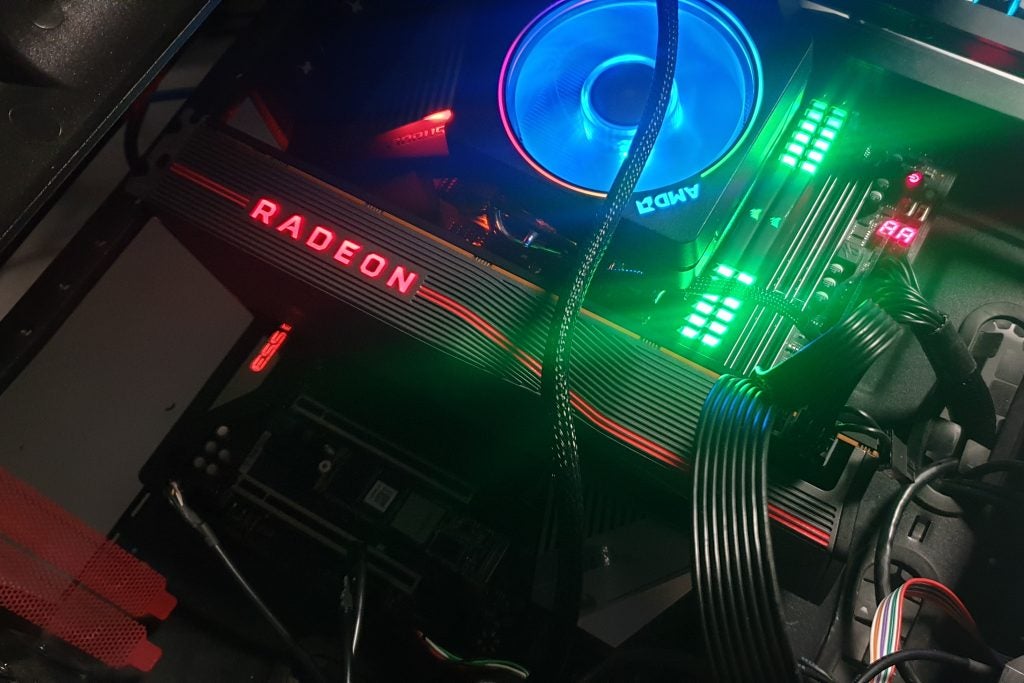
The ‘Radeon’ lettering glows red when plugged into a motherboard and turned on
To compensate, AMD has added a slew of extra features to its RX 5000 Series cards, including Radeon Image Sharpening and Radeon Anti-Lag. The former feature looks to restore clarity to in-game images that have been negatively impacted by other post-process effects, while the latter claims to reduce the time between player input and display response by up to 31% which should please competitive gamers.
But let’s be honest, the contest between graphics cards is largely going to come down to raw performance and value for money, both of which AMD seems confident as it faces off against Nvidia’s RTX range.
Related: Best Graphics Cards 2019
Specs and technology – What are the specs for the RX 5700 XT?
Below is a comparison table comparing the specs of the two AMD Radeon cards to Nvidia’s closest competitors: the RTX 2070 and RTX 2060. AMD has itself said that it sees these specific RTX GPUs as it biggest rivals, and judging how similar the specs are, it comes as no surprise.
| RX 5700 XT | RX 5700 | RTX 2070 | RTX 2060 | |
| Architecture | Navi | Navi | Turing | Turing |
| Base clock speed | 1605 | 1274 | 1410 | 1365 |
| Boost clock speed | 1905 | 1546 | 1710 | 1680 |
| VRAM | 8GB GDDR6 | 8GB GDDR6 | 8GB GDDR6 | 6GB GDDR6 |
| Memory bandwidth | 448 GB/s | 448 GB/s | 448 GB/s | 448 GB/s |
| TDP | 225W | 185W | 185W | 160W |
| Price | £380 | £330 | £450 | £329 |
AMD’s RDNA architecture follows a 7nm manufacturing process, something to which the company ascribes a 1.25x performance per clock boost compared to the previous 14nm processors.
The AMD cards use an entirely different architecture to the RTX Nvidia cards. The RTX Nvidia cards feature Turing architecture and Tensor cores, which allows for features such as ray tracing and DLSS. AMD’s new Navi RDNA architecture, however, doesn’t offer such luxury technology – at least not in its current iteration. Despite this, the rest of the specs for the AMD Navi and Nvidia Turing cards look largely similar.
The AMD Radeon RX 5700 XT boasts the best clock speeds (both base and boost) out of the four graphics cards in question. This doesn’t always translate to a superior in-game performance, but it’s still an encouraging sign.
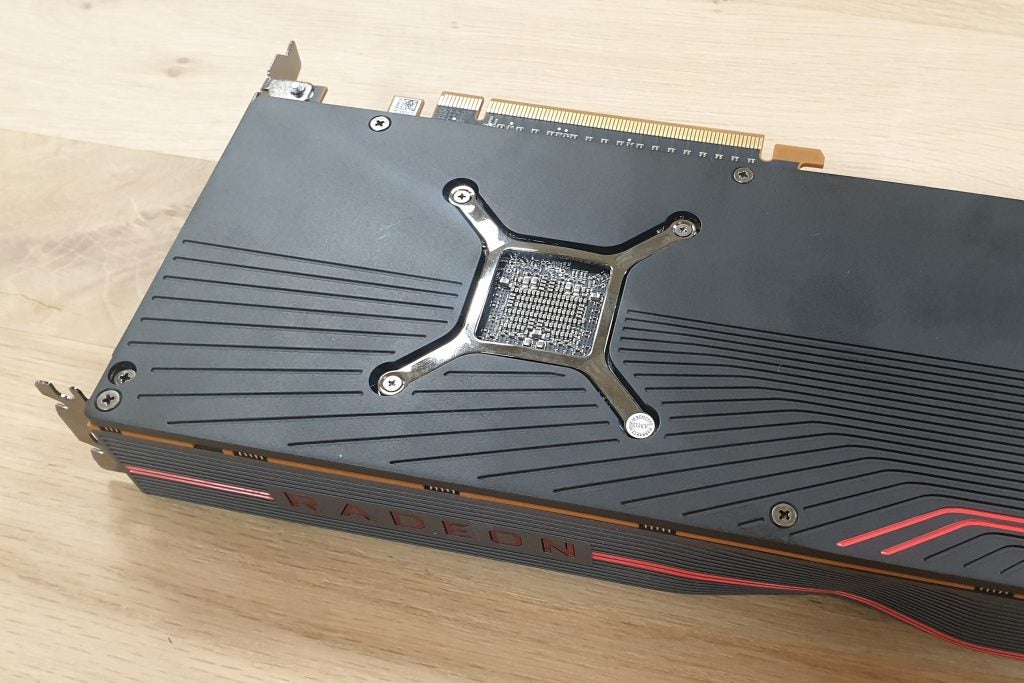
The graphics card’s GPU is visible on the back and looks extremely cool
VRAM is identical with all but one of the graphics cards, with both Nvidia and AMD agreeing 8GB GDDR6 is the best option for mid-range performance power. AMD suggests the GDDR6 upgrade sees a 60% improved performance/watt when compared to GDDR5.
All four cards offer the same memory bandwidth speeds at 448 GB/s too, yet again showcasing how similar these GPUs are. This increase in memory bandwidth is thanks to the new PCI Express 4.0 support.
On the downside, the two AMD cards appear to be more power hungry than the Nvidia counterparts, with slightly higher Thermal Design Power. As long as you’ve got a compatible PSU though, this shouldn’t be an issue at all.
Related: Amazon Prime Day 2019
Design – How does the RX 5700 XT look?
The AMD Radeon RX 5700 XT design takes a majorly different approach to Nvidia’s Founder Edition cards. While the GTX graphics cards have a big focus on the dual-fan setup, with the flashy black and silver colour combo making them look as if they jumped straight out of a steampunk novel, the RX 5000 Series cards have adopted a more elegant and modern look.
The word ‘Radeon’ is etched into the front and highlighted in red, while a striped casing gives extra texture and detail to the design. There’s only one fan here too, which is far less overbearing than any of the Nvidia graphics cards, although that means the AMD cards aren’t so great at cooling down.
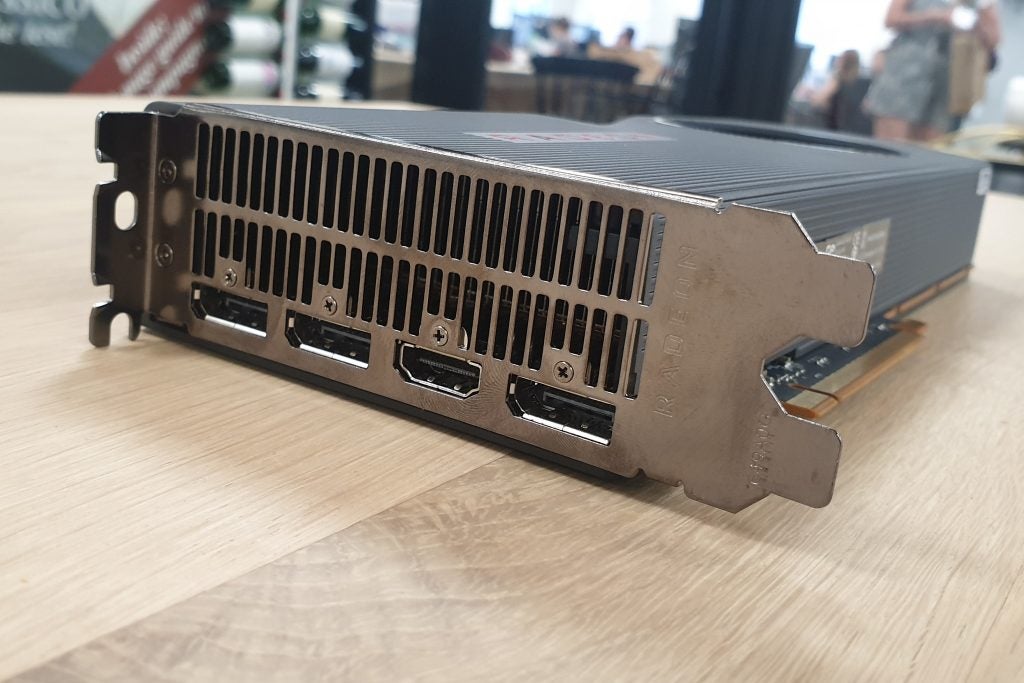
The RX 5700 XT sadly misses out on USB-C, which could be an issue in the future
Besides these few design flairs, elsewhere the cards are still largely the same as the Nvidia alternatives. The RX 5700 XT is roughly the same size as Nvidia’s Founders Edition cards, and offers the same connectors – three DisplayPorts and one HDMI – other than the lack of a USB-C port. That’s a minor disappointment considering more and more virtual reality headset setups are adopting this new streamlined connection.
Features – What features does the RX 5700 XT have?
The AMD Radeon RX 5700 XT may not boast fancy technology like ray tracing and DLSS, but the features it does have on offer are still seriously impressive.
What’s more, all of these features work very well at launch and don’t have a significant impact on performance. While the Nvidia RTX cards feel more ambitious with its features, AMD’s offering are certainly more polished.
Here are all the exciting AMD Radeon RX 5700 XT features:
Radeon Image Sharpening
Radeon Image Sharpening is arguably the biggest new software feature for the RX 5000 Series cards, as it negates the negative effects anti-aliasing features bring to in-game visuals in order to restore clarity to the display.
This is a just a technical way of saying details become more clear and crisp when Radeon Image Sharpening is activated. In The Division 2, the improvement that AMD’s feature brought to the display was subtle yet welcome – the colours of the American flag look more vibrant, the wooden bench looks sharper and it was easier to see the details of a character standing in the distance.
On left: RIS turned off. On right: RIS turned on. (Game: The Division 2)
The most surprising thing about Radeon Image Sharpening though, is how little of a drain the technology places on the GPU. After activating it on Shadow of the Tomb Raider and The Division 2, with the resolution turned to Quad HD and the graphics presets whacked to the max, there was only a 1fps and 2fps decline. Compare this to something like ray tracing, which is a major strain on GPU performance, and AMD’s performance efficiency is very impressive.
| RIS Off (fps) | RIS On | |
| The Division 2 | 65 | 63 |
| Shadow of the Tomb Raider | 73 | 72 |
Another big plus is the number of games that support the technology. AMD suggests any game based on DirectX 9, DirectX 12 and Vulkan graphics will play nicely with RIS. This covers a huge range of games, including Hitman 2, Metro Exodus, Civilization 6 and plenty more. Again, this is a stark contrast to ray tracing, with only a handful of games currently capable of supporting the technology.
Radeon Anti-Lag
Radeon Anti-Lag looks to be a fantastic feature for competitive gamers, helping to reduce the input lag so there’s as little delay as possible between a click of a mouse and the resulting action on screen.
AMD claims Anti-Lag can reduce input lag by almost a full frame, which is almost 16.7 milliseconds at 60fps. That won’t make much of a difference to your generic gamer, but if you’re competitive and want every little advantage to keep racking up kill counts in your favourite shooter, then any slight performance edge will no doubt be enticing.
Anti-Lag works best when used with a low-latency gaming setup with a high refresh-rate monitor featuring variable fresh rate technology, with resolutions and graphics levels set high.
As I was using a 4K monitor that refreshed at up to 60Hz for this review, I was unable to test this out thoroughly at the time of publication – I will update this section of the review later once I’ve been able to test this with a faster monitor.
Radeon Chill
Radeon Chill is a fascinating feature that will lower the frame rate and reduce excessive GPU power consumption if the display is mostly static or you’re away from the keyboard. This is a great way to save on power, especially if your family or housemates are complaining about your gaming PC’s massive power usage.
Since the frame rate is boosted back up as soon as the display becomes more active, it won’t affect the user’s visual experience. After playing around with it via The Division 2 I can confirm it worked just as well as AMD claimed, smoothly transitioning from a low frame rate to a high one as soon as I hit the keyboard.
The difference in power consumption is substantial too, and will be increased further when playing less intensive games that see frame rates soar high. With The Division 2, I saw a 47W decrease when keeping my character still, but AMD claims you can see a huge 118w fall in Chill mode when playing Apex Legends.
| Off | On | |
| Power (W) | 310 | 263 |
| Frame rate | 43 | 30 |
Such a feature obviously won’t improve your game experience, but it’s still great to see AMD thinking of ways to cut down on wasted power consumption. David Attenborough will be proud.
Related: What is ray tracing?
Performance – How powerful is the RX 5700 XT?
The AMD Radeon RX 5700 XT is being marketed as a graphics card for Quad HD and Full HD gaming and our benchmark results back this up. The RX 5700 XT isn’t quite powerful enough to play modern AAA games in 4K, but if you’re not ready to make the step up to Ultra HD, our benchmark results suggest this could be one of the best value cards on the market.
I’ve also included the AMD Radeon RX 5700 in the benchmark tests, to see whether you’re better off buying AMD’s cheaper alternative, as well as the Nvidia RTX 2060 and RTX 2070, since AMD earmarked them as its closest competitors.
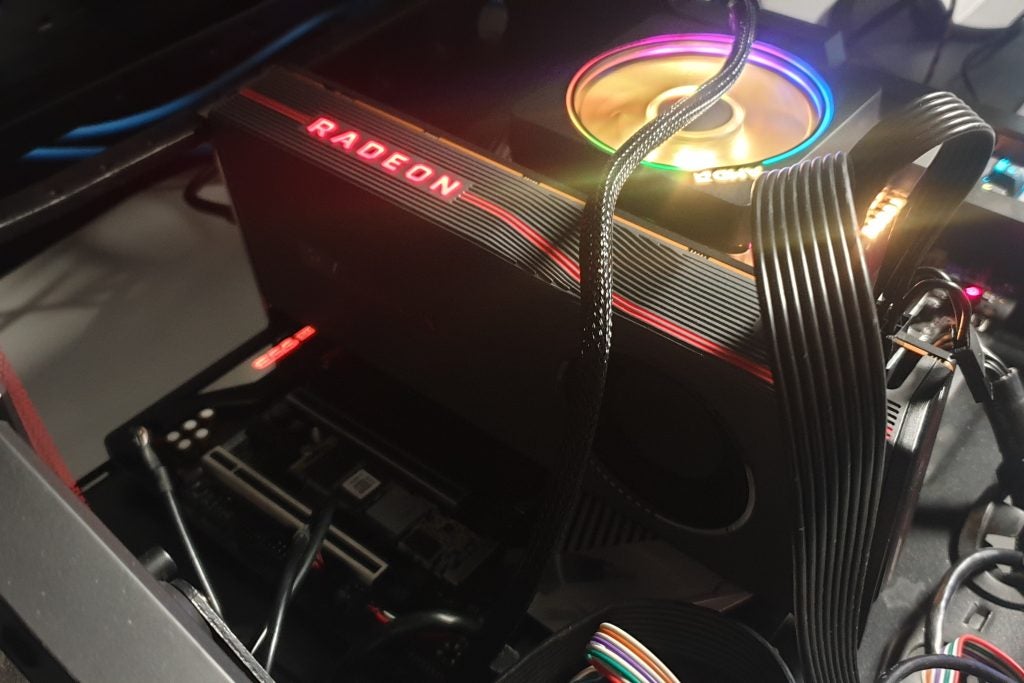
The RX 5700 XT is capable of playing most games in Quad HD at 60fps
Nvidia will actually be retiring the RTX 2070 and replacing it with the RTX 2070 Super edition very soon, but we haven’t been able to test Nvidia’s new lineup of Super cards yet. Once we do get our hands on them, we’ll be sure to update this review with the benchmark results.
Note that all the cards on tests are Founders Editions, except the RTX 2070, which is an Asus ROG Strix Gaming variant, as this was the only RTX 2070 card available to us. The performance results for the third-part RTX 2070 shouldn’t be widely different to the Founders Edition card, though.
Testing Methodology
We tested every graphics card on the exact same computer rig in our office, ensuring we kept the processor, SSD and RAM consistent to attain fair results. The exact components can be seen below:
- Motherboard: X570 Aorus Master Gaming
- Processor: AMD Ryzen 9 3900X
- RAM: Corsair Vengeance 2666MHz, 16GB DDR4
- PSU: Corsair CX750M
- SSD: Aorus NVMe Gen4 SSD 2TB
- OS: Windows 10
We also carefully selected three games to ensure a fair test between the graphics cards, and so there wasn’t an unfair advantage for any specific GPU architecture. Shadow of the Tomb Raider, for example, is optimised for Nvidia drivers, and so we also included the AMD-optimised The Division 2 to maintain a fair test. Finally, we included Dirt Rally as an example of a game released a number of years ago which isn’t as intensive on the GPU as the other two titles.
Every game was set to the highest graphics preset, typically called ‘Ultra’ or ‘Highest’. The only custom tweaks I made in the settings were to disable Vsync, as I didn’t want the frame rate scores to be affected by our monitor’s refresh rate.
Read below to see the results:
Shadow of the Tomb Raider – RX 5700 XT benchmark results
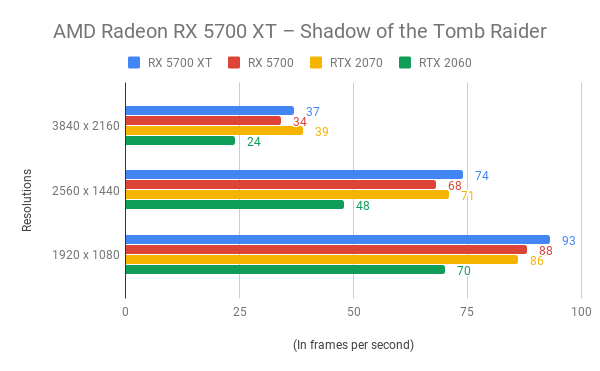
Shadow of the Tomb Raider is optimised for Nvidia hardware – even supporting ray tracing technology – so the expectation was that the RTX 2070 would sneak the lead in this benchmark test. That wasn’t the case though.
The AMD 5700 XT actually saw better performance results than the Nvidia RTX 2070 card in every resolution test bar 4K – although every benchmark test was tightly contested. The fact that it lost out in the Ultra HD face off is no big issue though, since the 37fps result the AMD card posted isn’t high enough to play without technical blights.
The more interesting comparison though, is how the cheaper AMD 5700 graphics card remained in touching distance for every benchmark result. Judging from this alone, I’d be tempted to opt for the AMD 5700 over the XT and save some cash in the process – the performance sacrifice is so minimal it’s unlikely to be noticeable.
Ignoring comparisons with other cards, the AMD 5700 XT benchmark results for Shadow of the Tomb Raider are very impressive, highlighting an excellent performance when the resolution is set to Quad HD or Full HD.
The Division 2 – RX 5700 XT benchmark results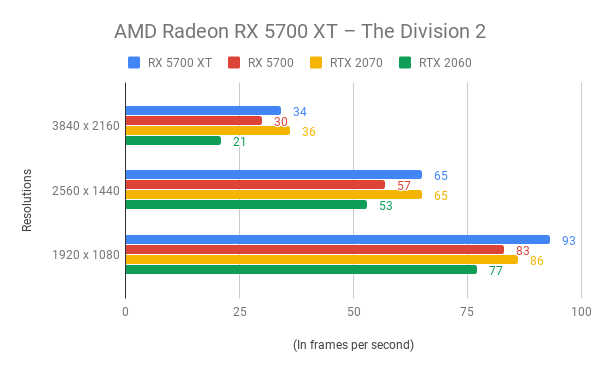
The Division 2 is optimised for AMD GPUs, so you’d expect the Radeon RX 5700 XT to hold an advantage over its Nvidia rivals in this contest. Somewhat disappointing though, the AMD GPU posted almost identical results to the Nvidia RTX 2070 for the 4K and Quad HD tests. That said, the 4K result is kind of irrelevant, as the 34fps result is too low for anyone to play comfortable, especially since it’s an online multiplayer shooter.
It’s not until you switch the resolution to Full HD that you’ll see Radeon RX 5700 XT gain a decent lead over the RTX 2070, scoring an impressive 93fps average. However, the lead is only by 7fps, so the naked eye almost certainly won’t be able to detect a difference.
The important thing to take from The Division 2 benchmark is that the AMD 5700 XT comfortably exceeds the 60fps target for both Quad HD and Full HD, so the performance will be smooth enough to play the online shooter without issue.
Dirt Rally – RX 5700 XT benchmark results
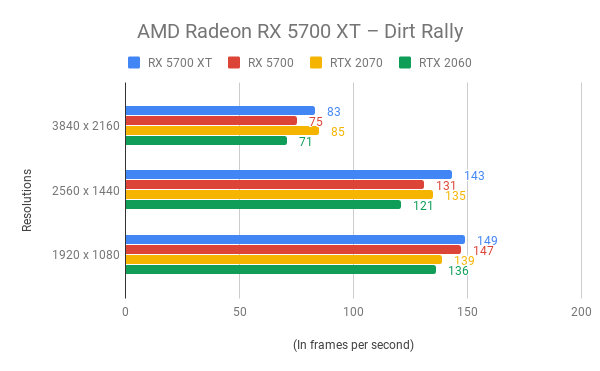
We included Dirt Rally in our benchmark process because it’s a great example of a GPU-intensive game released a number of years ago. If a graphics card can offer a respectable performance with this title, it should be able to handle the majority of games released prior to 2015.
Interestingly, while the Radeon RX 5700 XT hasn’t been marketed as a 4K graphics card, it managed an impressive 83fps average with Dirt Rally when the resolution was whacked up to Ultra HD. Of course, Dirt Rally is far less demanding than modern AAA titles, but it’s still a very encouraging result if you’re looking to play through your backlog of classic hits.
The AMD Radeon RX 5700 XT also posted better frame rate scores in the Quad HD and Full HD benchmark tests compared to the Nvidia RTX 2070, and was only 2fps behind for 4K.
However, the cheaper Radeon RX 5700 wasn’t far behind any of its big sibling’s scores, with a 12fps difference being the greatest margin across every resolution test. Such results would make me hesitate spending £50 dollars more for the XT.
3DMark Fire Strike Ultra – RX 5700 XT benchmark results
The 3DMark Fire Strike Ultra benchmark test measures raw GPU performance and GPU temperature by simulating a 4K game. It’s a good way to discover the performance potential of a graphics card, although the figures should be used with caution as it doesn’t give an accurate indicator of in-game performance.
The AMD 5700 XT came out top in the four-way test with a performance score of 5927. The RTX 2070 wasn’t far behind though, with Fire Strike Ultra result of 5710. Interestingly, the AMD 5700 could only muster a total 5351, which doesn’t really reflect its excellent in-game benchmark results.
With a 356W peak power consumption during the 3DMark Fire Strike Ultra test, the RX 5700 XT demanded the most power out of the quartet of graphics cards. This isn’t necessarily a bad thing, you’ll just have to make sure your PSU is capable of powering it.
It wasn’t such good news for the temperature test though, with RX 5700 XT generating the most heat by a long way compared to the other graphics cards on test. With an 80°C peak temperature during the 3DMark Fire Strike Ultra test – the temperature was creeping up to concerning degrees. That’s not to say you should worry this graphics card will combust, but you’ll want to maximise airflow and avoid using mini cases to keep this GPU in good condition.
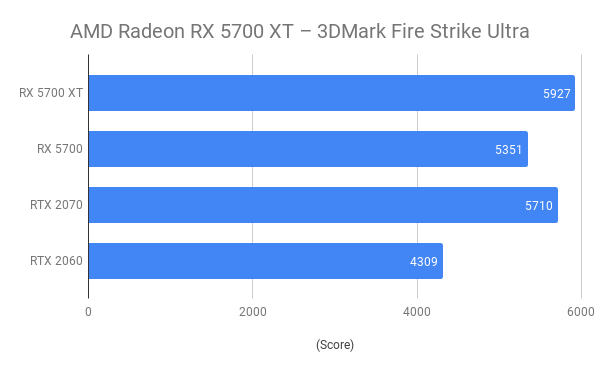
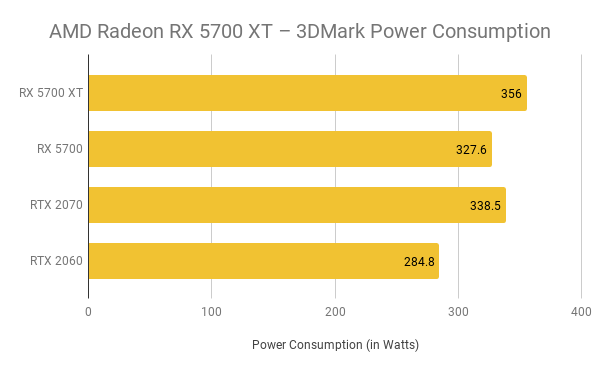
Related: Best PC Games 2019
Overclocking – Can you overclock the RX 5700 XT?
Given the AMD Radeon RX 5700 XT already saw temperatures soar up to 80°C during testing without an overclock I wasn’t very hopeful I could squeeze much more performance power out of the card before seeing resistance.
My expectations turned out to be accurate, as after reaching a 136MHz overclock while running Unigine Heaven I was blocked from pushing it even further. I’m not not sure whether it was AMD’s drivers or the MSI Afterburner overclocking software that halted my progress, but either one is still an indicator the RX 5700 XT was starting to hit its limit.
With the 136MHz overclock, the RX 5700 XT only achieved a performance increase of 5fps while running Unigine Heaven. That’s not much of an improvement at all, so I wouldn’t bother waste time to overclock this card unless you’re a serious GPU tweaker.
Should I buy the AMD Radeon RX 5700 XT?
The AMD Radeon RX 5700 XT is currently one of the very best graphic card options available if you’re looking to game in Quad HD (2560×1440). Every game we tested in this resolution easily surpassed 60fps with graphics settings maxed out.
But while the RX 5700 XT frequently bested the RTX 2070 in benchmark tests, Nvidia arguably still has the edge since its RTX card offers the jaw-dropping ray tracing feature. Deciding between the AMD or Nvidia variant will mostly come down to whether you’re happy to pay the extra £70 for the super-realistic light rendering technology – if not, the RX 5700 XT is your card.
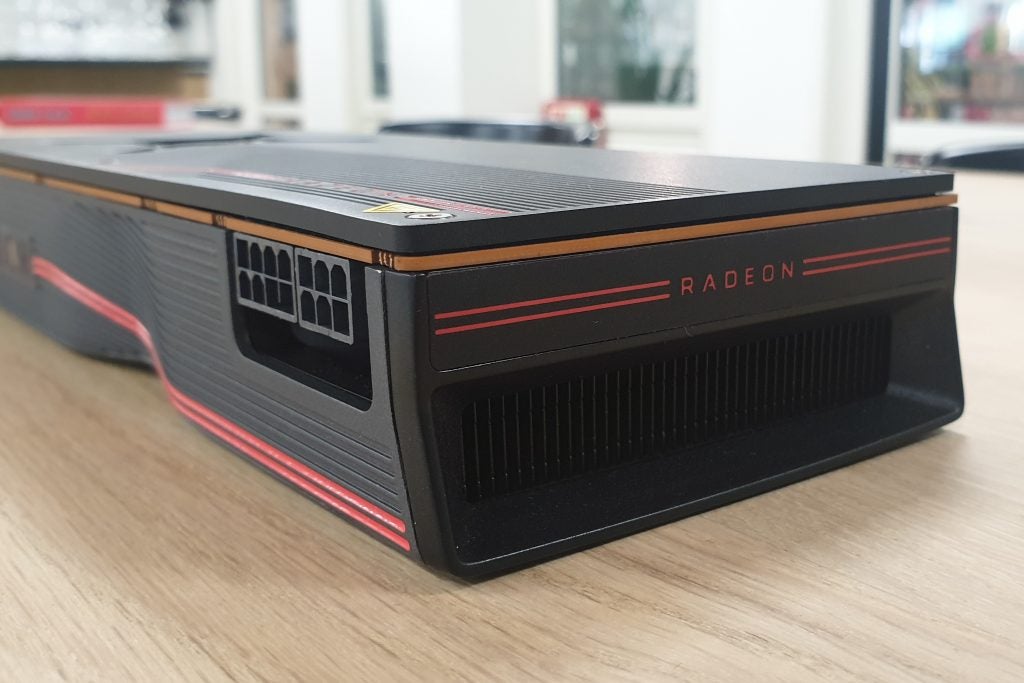
The RX 5700 XT is one of the best value Quad HD graphics cards
That said, Nvidia’s new Super RTX cards may have already negated AMD’s brief advantage. The RTX 2060 Super graphics card looks to be priced very similarly to the RX 5700 XT, and if the new Nvidia card can match AMD’s performance, it could well be the superior option. We won’t know that for sure until we test the new Super card, but we will update this review as soon as we do.
Not happy to wait for our RTX 2060 Super graphics card review? Then the RX 5700 XT is still a superb option that you won’t be disappointed by. Although I do suggest having a look at the benchmarks results for the cheaper RX 5700 card first, as it arguably represents better value.
Related: AMD Radeon 5700 Review
Verdict
One of the best value graphics card for Quad HD gaming, as long as you’re happy to forget about ray tracing.


